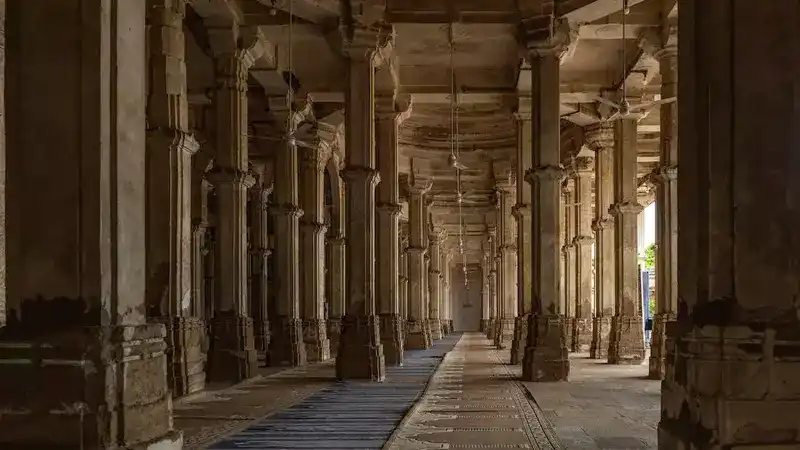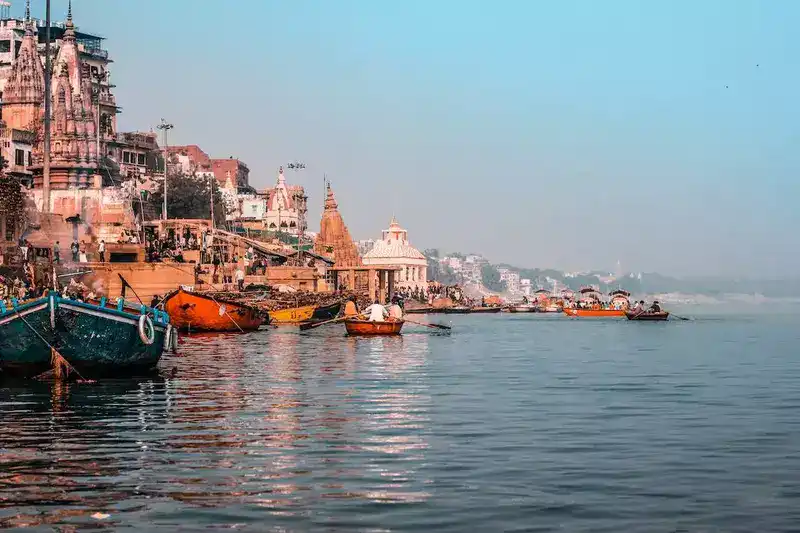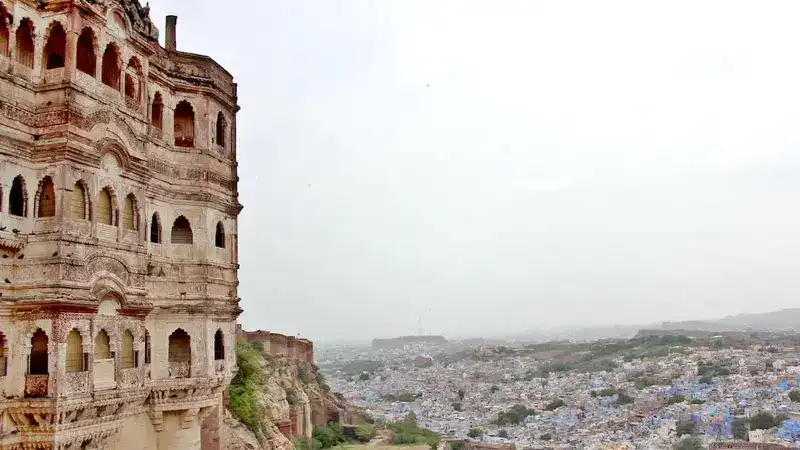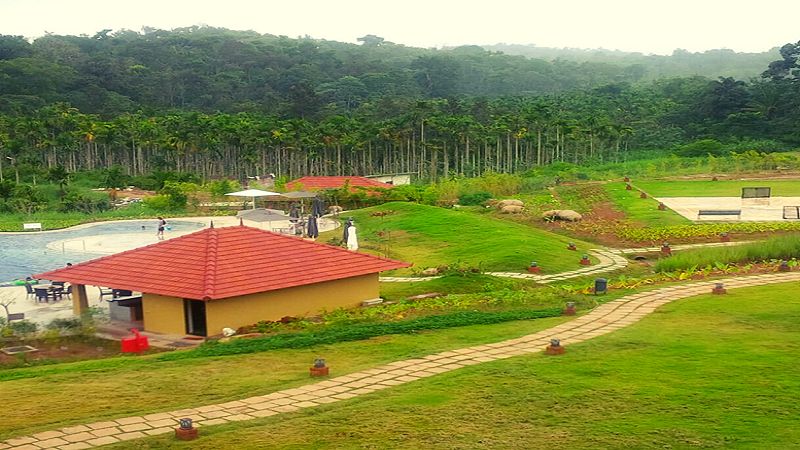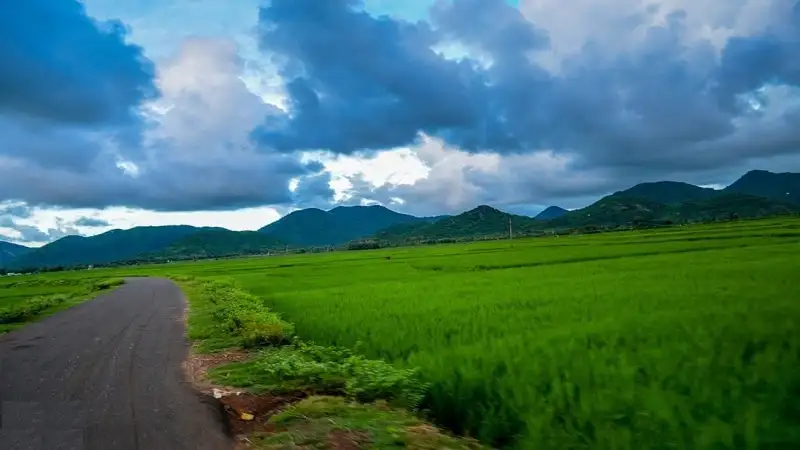November in India marks a transitional period as the country bids farewell to the monsoon and welcomes the onset of winter. With clearer skies, milder temperatures, and a sense of renewal, this month is a perfect time to embark on a journey of discovery and exploration.
From historical monuments to natural wonders, India offers a kaleidoscope of experiences waiting to be unveiled. This article presents a curated list of 10 mesmerizing cities to visit in November, each offering a unique blend of culture, heritage, and natural beauty.
1. Ahmedabad, Gujarat
Photo by: https://www.pexels.com
Ahmedabad, the largest city in Gujarat, is a vibrant tapestry of history, culture, and modernity. In November, the weather is pleasant, allowing you to explore the city’s architectural wonders, such as the intricately carved Adalaj Stepwell and the awe-inspiring Jama Masjid. The Sabarmati Ashram, where Mahatma Gandhi lived, provides a glimpse into India’s struggle for independence.
Ahmedabad boasts an architectural heritage that spans centuries, from ancient to modern times. The city is home to numerous intricately designed step-wells, such as the Adalaj Stepwell and the Dada Harir Stepwell, which served as water sources and stunning examples of artistic craftsmanship.
The Jama Masjid, an exquisite mosque, is a testament to the city’s Mughal influences, featuring intricate detailing and a serene ambiance.
Theedabad’s most iconic architectural feature is the Sabarmati Ashram, where Mahatma Gandhi lived during India’s struggle for independence. The ashram is a haven of peace, offering insights into Gandhiji’s philosophy and life through its preserved artifacts, exhibits, and serene surroundings.
2. Kolkata, West Bengal
Photo by: https://www.pexels.com
November is a festive month in Kolkata, as the city celebrates Kali Puja and Diwali with great pomp and enthusiasm. The streets come alive with illuminated pandals (temporary temples) and cultural performances. Visit the iconic Victoria Memorial, explore the bustling markets of New Market, and savor the delectable Bengali sweets.
Kolkata has a profound literary heritage, and its contribution to Indian literature is unparalleled. The city has been home to luminaries like Rabindranath Tagore, who became the first Asian Nobel laureate in literature, and authors such as Sarat Chandra Chattopadhyay and Bankim Chandra Chattopadhyay. The iconic College Street, lined with bookstores and publishing houses, is a haven for book lovers and students.
Kolkata blends architectural styles, from British colonial buildings to Indo-Saracenic and Victorian structures. The Victoria Memorial, a majestic white marble monument, is a tribute to Queen Victoria and offers a glimpse into the city’s colonial past. The Howrah Bridge, an engineering marvel, spans the Hooghly River and connects the city’s two sides.
Kolkata is a paradise for food enthusiasts, offering a rich culinary heritage that spans street food, traditional Bengali cuisine, and international fare. Indulge in mouthwatering street snacks like puchka (pani puri) and kathi rolls, or savor authentic Bengali dishes like fish curry and roshogolla (a sweet dessert). The city’s historic restaurants, such as Mocambo and Peter Cat, continue to serve up traditional delights.
3. Pushkar, Rajasthan

Photo by: https://pixabay.com
Famous for its annual Pushkar Camel Fair, November is the best time to experience this unique event’s vibrant colors and traditions. Pushkar’s sacred lake and Brahma Temple add to their spiritual aura, while the bustling bazaars offer a chance to shop for local handicrafts and textiles.
The Brahma Temple, dedicated to Lord Brahma, is one of the few temples in the world dedicated to this deity. Its distinct red spire dominates the skyline and draws pilgrims seeking blessings and solace.
One of the most iconic events in Pushkar is the annual Pushkar Camel Fair, which takes place in November. This vibrant extravaganza is a spectacle of culture, color, and festivity.
Thousands of camels, cattle, and horses are traded in a lively marketplace, while traditional Rajasthani music, dance, and folk performances fill the air. The fair also hosts competitions like camel races, mustache contests, and the crowning of “Miss Pushkar.”
Pushkar’s cultural vibrancy is evident in its lively markets, where you can shop for traditional Rajasthani handicrafts, textiles, and jewelry. The bustling streets are lined with colorful stalls selling everything from embroidered fabrics and leather goods to intricate silverware.
4. Kochi, Kerala

Photo by: https://www.pexels.com
Kochi’s rich maritime history and stunning natural beauty make it a captivating destination in November. Explore the historic Fort Kochi area, adorned with charming colonial-era architecture. Witness the mesmerizing Kathakali performances and savor the flavors of Kerala cuisine.
Kochi’s history is deeply intertwined with the ebb and flow of trade routes, attracting merchants and explorers from across the globe. The Fort Kochi area’s cobbled streets and colonial-era architecture is a testament to the city’s multicultural past. The iconic Chinese fishing nets, a legacy of early Chinese traders, dot the coastline and provide a picturesque backdrop to the sunset.
The Mattancherry Palace, also known as the Dutch Palace, offers a glimpse into the city’s royal history with its exquisite murals and artifacts. The Jewish Synagogue, located nearby, is one of the oldest synagogues in the Commonwealth and a testament to the city’s diverse religious fabric.
Kochi’s backwaters, a labyrinthine network of lagoons and canals, offer a serene escape from the urban bustle. A leisurely cruise along the backwaters allows you to immerse yourself in the natural beauty of Kerala, surrounded by lush greenery and the gentle rhythm of the water. The nearby village of Kumarakom is renowned for its backwater experiences, where you can stay in traditional houseboats and witness the harmonious coexistence of nature and human life.
5. Khajuraho, Madhya Pradesh
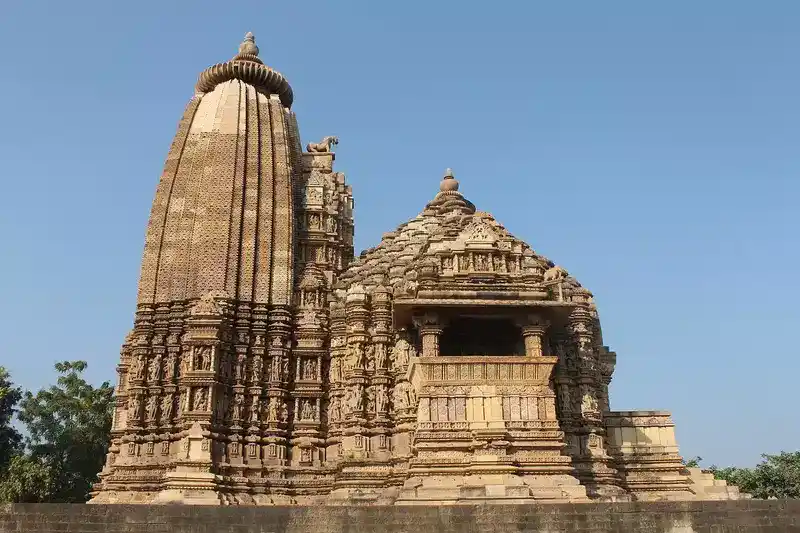
Photo by: https://pixabay.com/photos
The Khajuraho Group of Monuments, a UNESCO World Heritage Site, is renowned for its exquisite temples and intricate sculptures. November’s cooler temperatures provide a comfortable environment to explore the sensuous carvings that depict various aspects of life and mythology.
The temples of Khajuraho, built between the 9th and 11th centuries by the Chandela dynasty, showcase a stunning fusion of architecture, sculpture, and spirituality. These temples are grouped into three zones: the Western, Eastern, and Southern.
The Western Group, which includes the Kandariya Mahadeva Temple, is the most renowned and features an intricate symphony of sculptures that depict various aspects of life, mythology, and spirituality.
A significant aspect of Khajuraho’s art is its celebration of love and sensuality. The sculptures often depict amorous couples in various poses, celebrating the joy of physical and emotional intimacy. While these sculptures have garnered attention for their explicit depictions, they are an integral part of the temple complex, symbolizing the dual aspects of human existence—earthly desires and spiritual pursuits.
6. Varanasi, Uttar Pradesh
Photo by: https://www.pexels.com
Varanasi, the spiritual heart of India, is a city steeped in mystique and devotion. In November, the weather is pleasant, allowing for immersive experiences along the ghats of the Ganges River. Witness the mesmerizing Ganga Aarti, explore ancient temples, and absorb this ancient city’s spiritual energy.
Varanasi has been a center of learning and philosophy for centuries. The renowned Banaras Hindu University (BHU) is a testament to the city’s commitment to education and knowledge. Scholars, philosophers, and artists have been drawn to Varanasi’s ashrams and institutions, fostering an environment of intellectual growth and exploration.
Varanasi’s cultural heritage is celebrated through festivals, music, and arts. The city hosts the vibrant Ram Leela performances during Dussehra, bringing the epic story of Lord Rama to life through theater and music. The classical music and dance festival, Sankat Mochan Sangeet Samaroh, draws artists and enthusiasts worldwide, infusing the city with melodies and rhythms.
Varanasi’s focus on sustainability and conservation is evident through initiatives to preserve the Ganges and promote responsible tourism. Efforts to clean and protect the river and campaigns to raise awareness about environmental preservation reflect the city’s commitment to safeguarding its spiritual and natural heritage.
7. Gangtok, Sikkim
Photo by: https://pixabay.com
Gangtok is nestled in the Himalayan foothills and offers breathtaking views of snow-capped peaks and lush valleys. November showcases the city’s picturesque beauty without the monsoon rains. Explore monasteries such as Rumtek and Enchey, embark on scenic treks, and relish the tranquility of this hill station.
Gangtok’s cultural richness is celebrated through its festivals, traditions, and warm hospitality. The Namgyal Institute of Tibetology is a treasure trove of Tibetan artifacts, manuscripts, and Buddhist iconography.
The museum offers insights into the region’s cultural heritage and deep connections between Sikkim and Tibetan Buddhism. The annual Gangtok Food and Culture Festival showcases the region’s culinary delights, traditional dances, and handicrafts, providing visitors with a vibrant immersion into local culture.
For adventure enthusiasts, Gangtok is a gateway to thrilling activities such as trekking, paragliding, and river rafting. Tsomgo Lake, also known as Changu Lake, is a stunning glacial lake surrounded by rugged terrain. The Nathu La Pass, a historic trade route between India and Tibet, offers a glimpse into the region’s history and strategic significance.
8. Puducherry

Photo by: https://www.pexels.com
With its distinct French colonial charm, Puducherry is a serene coastal retreat. The pleasant weather in November makes it an ideal time to stroll through the charming French Quarter, relax on pristine beaches, and explore the Sri Aurobindo Ashram.
Puducherry’s colonial legacy is evident in its architecture, a testament to its French heritage. The French Quarter, also known as White Town, is a picturesque enclave with pastel-colored buildings, charming boulevards, and leafy avenues.
The colonial influence is particularly pronounced in the architecture of structures like the French Consulate, the Governor’s Residence, and the imposing Raj Niwas. The Church of the Sacred Heart of Jesus, with its neo-Gothic design and ornate interiors, is a prime example of Puducherry’s unique blend of cultural influences.
One of Puducherry’s most famous attractions is Auroville, an experimental township founded on unity, spiritual growth, and sustainable living principles. The Matrimandir, a magnificent golden sphere, serves as Auroville’s spiritual center and symbolizes human unity and progress. Visitors can meditate and find solace in its serene surroundings.
9. Bodh Gaya, Bihar

Photo by: https://pixabay.com
For seekers of spiritual enlightenment, Bodh Gaya holds immense significance as the place where Siddhartha Gautama attained enlightenment and became Buddha. November’s mild weather allows for introspective moments under the Bodhi Tree and exploration of the Mahabodhi Temple complex.
The sacred Bodhi Tree is central to Bodh Gaya’s significance, under which Buddha is said to have achieved enlightenment. The tree, a direct descendant of the original Bodhi Tree, is a living testament to the transformative experience that occurred more than two millennia ago.
Adjacent to the Bodhi Tree is the Mahabodhi Temple, a UNESCO World Heritage Site and one of the oldest brick structures in India. Its intricate carvings and architecture blend Indian, Burmese, and Tibetan influences. The temple houses a gilded statue of Buddha in a seated posture, representing his moment of enlightenment.
Other notable sites in Bodh Gaya include the Lotus Pond, where Buddha is believed to have spent a week in meditation after enlightenment, and the Ratnagiri Hills, which offer panoramic views of the surrounding landscape.
10. Bikaner, Rajasthan
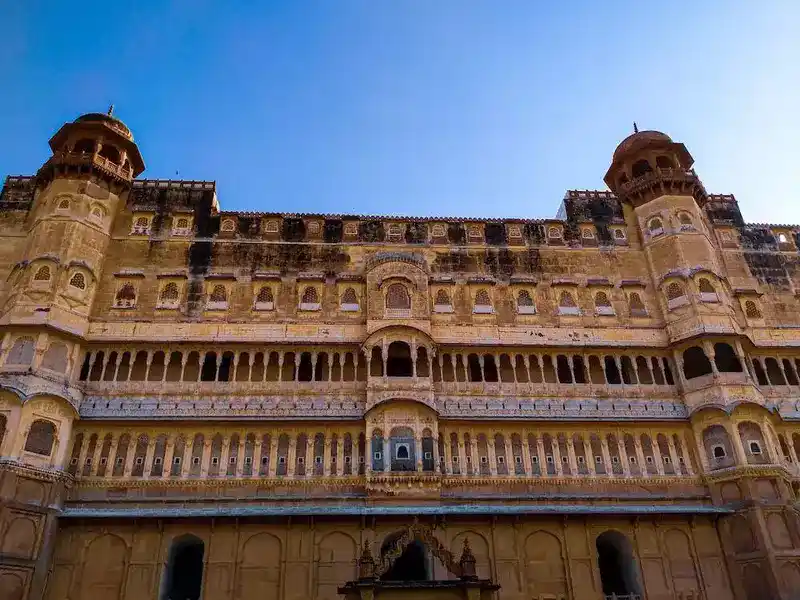
Photo by: https://www.pexels.com
November provides a comfortable climate for exploring the desert city of Bikaner, known for its well-preserved palaces and imposing forts. Visit the Junagarh Fort, adorned with intricate carvings, and indulge in the local delicacies that showcase the unique flavors of Rajasthan.
The crown jewel of Bikaner’s architecture is undoubtedly the Junagarh Fort. Built-in the 16th century by Raja Rai Singh, the fort is a testament to Rajputana military architecture. Its imposing red sandstone walls are adorned with intricate carvings and ornate balconies. Inside, you’ll discover a treasure trove of palaces, pavilions, and courtyards that showcase the artistic and aesthetic sensibilities of the time.
The fort’s palaces, including the Anup Mahal, Karan Mahal, and Phool Mahal, are adorned with exquisite frescoes, mirror work, and intricate detailing, offering a glimpse into the luxurious lifestyle of the erstwhile rulers.
Bikaner’s proximity to the Thar Desert invites adventurers to explore its vast dunes and experience the unique beauty of the desert landscape. Camel safaris offer an authentic way to immerse yourself in the desert’s tranquility, with the fiery sunsets and starlit nights leaving an indelible mark on your memory.
Final Words
November presents an opportune time to explore India’s diverse landscapes, cultures, and histories. From Varanasi’s spiritual aura to Puducherry’s colonial charm, each city on this list promises a distinctive and unforgettable experience. Whether you’re drawn to the ancient temples, the natural beauty, or the festive celebrations, these 10 mesmerizing cities in India beckon you to embark on a journey of discovery, reflection, and wonder.

